Greetings!
There’s been a long gap between this post and the last. What is it due to? Have I headed off into the deepest Amazonian jungle to watch my favourite football team lose? Or perhaps decided to brave the dangers of northern Iraq to see what is really happening over there? Such would be good reasons for not posting, but alas, the real one is far less exciting. What really happened is that my computer got a nasty virus and crashed, I lost more or less everything and it had to have a stay in with the repair people who’ve cleaned it out, and rebooted it with fresh new programmes, none of which include MS Word so even the documents I saved, I couldn’t open. Still, back in the saddle now and here we have the very last post of ‘The Missing Link’, the last part of my explorations of the Romanian capital Bucharest. Perhaps not quite as exciting as Manaus or Kirkuk but just as interesting.
Keep travelling!
Uncle Travelling Matt
Links to all parts of the travelogue
Ukraine
Moldova and Transdniestra
Romania
3.4: The Painted Monasteries of Bucovina
3.5: Targu Neamt, Agapia and Sihla
3.7: The Mocanita and Viseu de Sus
3.8: Viseu de Sus to Bucharest
Bucharest (II)
I woke up late on my last day a free agent. I’d slept surprisingly well in my dorm bed and had nowhere that I particularly longed to see and nothing that I particularly longed to do. However, as with all mornings following a night of drinking, there was one thing that I needed before attempting anything else and that was caffeine, and where better to enjoy a coffee than in the atmospheric confines of the Hanul lui Manuc? For a one-off, hell, I could afford it!
En route I came across an open-air collectables market on Piaţa Universităţii. I checked for old banknotes and they were there aplenty but the prices were sky-high so I declined. I did make one purchase though, some plastic wallets for the notes that I already have, bought off a Bulgarian trader from Ruse who chatted to me in his native tongue about trade across the border, impressed that he had found a foreigner who actually understood him.
Frappé in the han was a pleasant and rejuvenating experience. I sat on the upper floor overlooking the courtyard, kept cool by a fine mist sprayed from ice-cold pipes above my head. Such five-star luxury is what many people crave when they go on holiday. I generally don’t, but I must admit that, now and again, it can be rather fun.
With the best part of the day to kill afterwards, I decided to check out a bit of culture but the History Museum was shut so instead I retired to the Cişmigiu Gardens where I read and relaxed on a bench overlooking the boating lake.
I took a trip on the Metro up to Piaţa Victorei and checked out the Museum of the Romanian Peasant. This is a Bucharest institution and lauded internationally, winning the coveted European Museum of the Year Award in 1996,[1] and so despite Romanian peasants never being high on my list of sightseeing priorities, I expected this to be good.
But was it? Hmm… it’s hard to say to be honest. You see, whilst the Museum of the Romanian Peasant is a museum, it was quite unlike any other museum that I’ve ever set foot in. I can see why it won an award because it is so different that it seems to be trying to redefine what a museum is, but the question remains, does its concept of a museum work? To me it was more like a modern art gallery, short on historical detail and heavy on hand-written notes and experiential and artistic detail. Being a bit of a traditionalist as far as museums are concerned, (after all, if a museum can’t be stuck in the past, then what can?), I was left a bit cold by it all but I could see why some might like it.
The kind of people who use words like ‘contemporary’ in everyday conversation.
I now only had a few hours before I had to head airportwards and that rather oversized stomach of mine was rumbling so I indulged in an experience that I could never indulge in at home.
The Caru’ cu Bere is Bucharest’s best-known and oldest eatery. Established in 1879, it has been in its present premises since 1899. A pricy establishment in the heart of the Lipscani District, it is famed for its gorgeous Gothic interior, excellent traditional food and large glasses of beer. In short, it’s the kind of establishment that, in England, I would never dream of going anywhere near, (unless someone else is paying…), but one of the joys of travelling through the world’s cheaper regions is that, whilst one does not live it up all the time and must still economise, on occasions, if one really wants to, one can drink frappé at the Hanul lui Manuc and dine at the Caru’ cu Bere. And that can enhance a trip immeasurably for it takes much of the worry and stress out of travel. If a holiday is a time to relax and let it all go, then how can one truly achieve such an aim pinching the pennies every minute? I remember a trip that I took with my ex-wife to south-western France five years before. At every meal and every hotel we were checking our outgoings anxiously and suffering minor strokes every time the drinks bill was presented to us, and whilst the area where we were travelling was incredible and the food unbelievable, the cost did impact seriously on our enjoyment of the trip. I’d loved to have stayed longer there, to tour around as I had done on this trip, stopping here, dining there and taking the train between the two but at €20 a meal, €50 a night and €5 a beer then you can forget it.
A more practical example of what I am trying to say is when I went to Bolgrad. Not on the itinerary, off the beaten track, I arrived in town with no connections, no accommodation booked and no idea of hotel prices. In Western Europe such a strategy would be unthinkable as there’s always a good chance that the only accommodation available might either bankrupt me or involve a taxi journey that would do the same, (I’m always especially wary by the way, of establishments which describe themselves as ‘boutique’ hotels or guesthouses ‘with character’; they are always stupidly overpriced), but in Bolgrad I knew that whatever the cost, I could afford it and that knowledge provides a great peace of mind.
I knew that I liked the Caru’ cu Bere even before I stepped in since the booking desk on the street was manned by a bevy of extremely pretty and buxom wenches attired in some sort of faux Bavarian beer girl-cum-peasant maiden costume which emphasised artistically their impressive cleavages. Happy indeed to sign up for a table, I was led indoors by one of these Romanian Heidis and shown to a small table upstairs. There however, I discovered that the interior serving staff, whilst also dressed in cheesy peasantesque uniforms, were disappointingly a). mostly male and b). these uniforms were far more modesty both in skirt length and chest coverage. Ho hum. Still, I couldn’t complain too much, for here there was much else to look at; my seat surveyed a glorious Gothic interior which resembled a Hogwarts classroom although, alas, one without Hermione Grainger in it. [2]
Caru’ cu Bere: inviting
And there, in that citadel of Romanian tradition and culture, with a fine dose of peasant fare before me, I concluded my Missing Link expedition. As I sat and chomped on my spicy sausage and slurped my soup in a cottage loaf, I mused on how it had been and what I’d learnt.
Boiling things down to their very basics, I had to say that, looking at its original remit, the trip had been a success. My aim had been to close the gap between Konotop and Bucharest and not only had I done that, but I’d done it in a far more interesting fashion that I would have done had not the Ukrainian border police thwarted me a decade previously. Back then I’d simply intended to go straight from Kiev to Bucharest on the overnight train, but this time I’d managed to explore seven living cities, two ghost cities, five sleepy towns, one new country and one new almost-a-country.[3] Not bad for under three weeks.
The highlights had been many, (wandering through the overgrown precincts of Pripyat, the Hotel Cosmos in Chișinău, the trek up to Sihla and chatting with Anton Bremer on the Mocănița to name but a few), whilst the lowlights were few and far between, (I was a little disappointed with Odessa and Tiraspol). Most of all though, the trip had done what all trips should do: it had educated me. I now know more about the Chernobyl Disaster, the Holocaust east of Poland, the Bessarabian Bulgarians, the Gagauz, the Transdniestrian Conflict and Moldovan politics, Romanian Orthodoxy and church architecture, the German minority in the Maramureș and, (more importantly, that Kievean girls are without compare and that the Caru’ cu Bere hostesses wear the best-designed uniform on the planet.
But if I’d gained all of this invaluable knowledge, which questions remained unanswered? Primarily there was the big one that I’d been puzzling over before the trip: Is Romania Balkan? Sat drinking frappe in the Hanul lui Manuc and one could only answer in the affirmative, but riding the rails of the Maramureș and the answer is definitely a negative. Stood in the precincts of the Cetățuia Monastery near to Iași and no definitive answer can be conjured up.
Perhaps the problem was not the answer but the question itself? ‘Balkan’ is a man-made construct and what does it mean exactly? Turkey in Europe? Count out Slovenia. Post-communist world fractured by ethno-nationalism? Greece and Turkey cannot be Balkan then. Byzantium? Parts of Romania definitely don’t qualify. Beyond the cultural reach of the Germans perhaps? The fact is that Romania fits into all of the above categories yet at the same time, does not. The Turks were there but not for very long; post-communist yet, but a unique brand of communism and whilst nationalism has had a role to play since the 1989 Revolution, it has never threatened to rip the state apart, (although it has done with Moldova which is never considered as being Balkan); the Byzantines were only present in parts of the country but they had a wider influence and as for the Germans, they definitely had a huge influence in the north and the west of Romania, but in Wallachia and Moldavia, their presence and cultural imprint has been minimal.
The fact is that such questions can never be definitively answered, but they are worth asking for it is in the process of mulling them over that we can begin to comprehend the world in which we live in and travel through. Which brings us back to the big purpose behind the whole expedition: Why did I so want to fill in the gap between Konotop and Bucharest in the first place?
And the answer to that is simple: because no place is the same as another and travel gives us that unique opportunity to observe how one reality evolves into another. Back in 2002 I learnt how Japan evolves into Moscow; in 2003 I discovered how Bulgaria evolves into Britain. Now I could link up the both of them to see how the Balkans become Central Europe becomes Moldavia becomes the vast wheat plains of Ukraine. I have now seen with my own eyes, heard with my own ears, tasted with my own tongue, smelt with my own nose and touched with my own hands how from Konotop to Kilkenny, Tiraspol to Tokyo, Bucharest to Beersheva and Vișeu de Sus to Van, although we are all different, we are also all the same and our destinies are intertwined far more than we ever realise.
And there aren’t many lessons on Earth as fine and important as that one to learn.
Copyright © 2013, Matthew E. Pointon
Written April 2013, Smallthorne, UK
1 The other recipients of this prestigious award that I’ve visited are the Ironbridge Gorge Museum, UK (1977), Zuiderzeemuseum, Netherlands (1984), the Museum of Anatolian Civilisations, Turkey (1997), the National Railway Museum, UK (2001), the Chester Beattie Library, Ireland (2002), the Victoria & Albert Museum, UK (2003). All of them, I must say, were exceptional. Aside from the Museum of the Romanian Peasant, only one other Eastern European museum has won the award.
2 I must clarify here, that I am referring to the Hermione of the last three films, not the first five.
3 Respectively: Seven living cities: Kiev, Odessa, Chișinău, Tiraspol, Bendery, Iași, Suceava; two ghost cities: Chernobyl and Pripyat; five towns: Konotop, Bolgrad, Tȃrgo Neamț, Gura Humorlui and Vișeu de Sus; one new country: Moldova and the almost-a-country is of course Transdniestria.
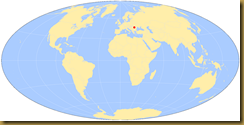
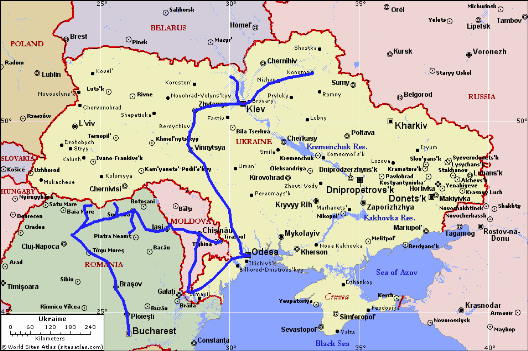
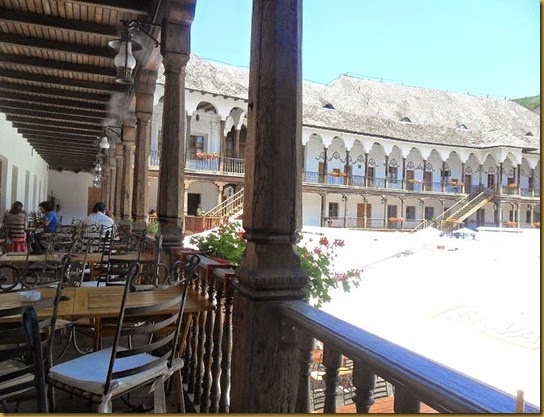
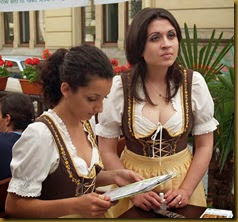
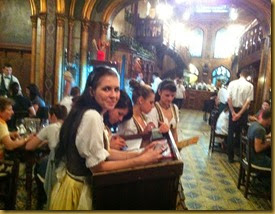
No comments:
Post a Comment